What To Do If You Are Facing Eviction

What to do if you are facing eviction
Eviction protections are expiring across the United States and Canada right now, and millions of people are suddenly finding themselves facing eviction with a pandemic still raging and the start of winter just around the corner.
Not knowing where you’re going to live next month is an unbelievably scary position to be in, and there are a lot of people out there who are facing this for the first time in their lives. It’s okay to be scared. But it’s also important to start taking steps to deal with this as soon as you realize that might be at risk of eviction.
As someone who has worked in homelessness and housing advocacy my whole career, here’s what I recommend you do:
Do not leave your home. Many landlords count on their tenants not knowing or understanding their rights, and take advantage of that to try to illegally evict them without following proper procedure. I have seen landlords attempt some flagrantly illegal things during my time working with vulnerable people. Many landlords have been ignoring and violating eviction moratoriums during this pandemic. Don’t fall for it. There is a legal process that has to be followed to evict you, even if your name isn’t on the lease - your landlord cannot simply slip a note under your door ordering you out by the end of the week, no matter what they tell you. Do not leave your home until a judge orders you to do so. You may have a better shot in court than you think you do, and seeing the court process to the very end buys you valuable time to figure out your next move.
Get a lawyer. Many legal aid societies and law school legal clinics offer free legal assistance for people facing eviction. Having a lawyer can make an enormous difference - one study found that people without lawyers were evicted 65% of the time, compared to just 15% of people who had legal representation. Start calling and contacting legal aid services as soon as your landlord threatens or files eviction - these services often only do intake for new clients on certain days, so it’s a good idea to research these services ahead of time.
Understand your rights. The protections you have under the law depend on where you live - it’s critical that you take the time to educate yourself about what those protections are. Your area will likely have a Residential Tenancies Act, a Tenant Act, or something along those lines. Look online for information specific to your area. There may also be special protections and procedures in place because of the pandemic. If you live in NYC, for instance, you have a right to free legal counsel if you are facing eviction. Find out what protections you have in your area.
Contact resources in your area. Again, depending on where you live, there are different resources available. There may be a tenant support agency that can connect you to free legal resources directly. You might be eligible for unemployment benefits or emergency income. Your state or city might also have emergency funding or eviction prevention programs in place. NYC, for instance, offers “one shot deal” emergency grants that cover rental arrears for people who are facing eviction due to unexpected crises. You should also look at emergency housing options, community food banks, or other resources that can help you survive this situation. In many cities you can call 211 or 311 to learn more or about resources, or you can go online.
Attend your eviction hearing. Once you are given a date and time for your eviction hearing, it is critical that you attend. Even if you have not paid rent in several months and you think your case is hopeless, you absolutely must show up for this hearing. If you don’t attend, you will lose by default - if you attend, you may be successful in winning leniency, the opportunity to pay back rent with a payment plan and avoid eviction, or even just a few weeks’ extension on the eviction date so you have more time to come up with a plan. Attend your hearing.
Have a back-up plan. Even with legal aid resources on your side, you have to prepare for the possibility that you might not be able to fight your eviction. Buy yourself as much time as you can, and use that time to start researching possible options. Is there a cheaper room for rent that you can afford with your unemployment benefits? Do you know anyone you can stay with? Are there any housing non-profits in your area that can help? Do you have any leads on employment in the future? Explore your options, and remember that it’s okay to ask for help right now - people in your life can’t help you unless you tell them that you’re struggling.
Call your representatives. You are not the only person suffering as a result of expiring COVID protections - your elected officials need to know that letting these programs expire is having serious, dire consequences for real people that they represent. Call everyone. Call the office of your congressman, call your MP, call your state senator, your MLA, your local city counsellors. Tell your story, and make as much noise as you can. It doesn’t guarantee that anything will be done, of course, but it makes the problem harder for your elected officials to ignore.
Important Resources for Americans: LawHelp.org - website for learning more about local laws and finding free legal aid in your area JustShelter - a database of community resources available to people facing eviction (might not include all emergency pandemic programs) Eviction Moratorium Database - a database showing where evictions have been legally paused or restricted because of the pandemic National Evictions Database - a database where you can look up what the legal eviction process is supposed to look like in your state Tenant’s Union Resources - a website where you can find information for the tenant’s union or pro-tenant organizations in your area Legal Services - a federal non-profit that helps connect low-income households to legal resources for fighting eviction
Fannie Mae Renters Resource Finder - a database that will tell you if your rental unit is federally financed, and show you resources to fight eviction accordingly Freddie Mac Renters Resource Finder - another website to show you if your rental property is federally backed and connect you to resources
Eviction Lab - a website that outlines information about pandemic eviction moratoriums and restrictions currently in place in your state The National Housing Law Project - a comprehensive database of resources for people facing eviction or foreclosure Important Resources for Canadians: The Canada Mortgage and Housing Corporation - up-to-date information about eviction moratoriums in each province and territory Affordable Housing Programs Across Canada - information on affordable housing programs in each province and territory Western Law Eviction Information - a website outlining the eviction process in Ontario and what you need to do to fight it Community Legal Education Ontario - a website that shows the proper procedure for eviction in detail and outlines steps that can be taken to fight it Nova Scotia Legal Residential Tenancy Law Resources - detailed information about the eviction process in Nova Scotia and how to fight it Centre for Public Legal Education Alberta - resources and information for renters facing eviction in Alberta BC Housing - information and resources for tenants facing difficulties in British Columbia Saskatchewan Office of Residential Tenancies - information for tenants facing difficulties in Saskatchewan Tribunal Administratif du Logement - resources and information for tenants living in Quebec. Available in both English and French.
More Posts from Arieso226 and Others
The Origins of the date of Christmas
Yesterday was Christmas, so Merry Christmas everyone! This is the holiday to be surrounded by family and friends and to look back on how far you’ve come, especially in this hellish year. Every year we celebrate this festive holiday on the 25th of December, but I’m curious, where did the celebration of Christmas originate? How did it become decided that this was when we would celebrate Christmas?
It’s a valid question! It is a fact that liturgical tradition, no matter how lauded, is no longer seen in a reliable manner any longer. The skepticism comes from the sixteenth-century Reformation, which inspired Protestant and particular Calvinist scholars to attack the ecclesiastical calendar. ‘‘As recent research has shown, it is the context of these early modern inquiries into the history of the liturgical year, which were often permeated by inter-confessional polemic, that the two basic approaches to understanding Christmas’ origins that continue to characterize the twenty-first-century debate on the subject first germinated. For lack of more appropriate labels, these two approaches may be referred to as ‘History of Religions Theory’ (henceforth: HRT) and the ‘Calculation Theory’ (CT). Roughly speaking, proponents of HRT interpret Christmas as a Christianized version or substitute for pagan celebrations that took place on the same date as the Roman Calendar, the most widely cited example being the birthday of Sol Invictus on December 25. By contrast, adherents to CT find evidence that the birth of Christ was determined independently, by resource to certain types of chronological speculation.’’
It is well known that a lot of Christianity is used to subvert or covert most of the old world’s celebrations. The holidays, like Halloween, Easter, Spring, and Christmas were all re-used from pagan traditions. German philologist Herman Usener (1834-1905) was one of the pioneers in the modern academic study of religion. ‘‘According to his view, the celebration of Christ’s birth in midwinter was essentially the heritage of a syncretistic sun cult, which already bore traces of an incipient ‘pagan’ monotheism. The central turning point in this story comes from the year 274 CE when the emperor Aurelian allegedly elevated the original sun god Sol Invictus to the supreme deity of the Roman empire and established his cult on December 25. Threatened by the persistent popularity of these rituals among newly baptized Christians, the early Church was moved to incorporate traces of the cult into its own liturgy and thus re-interpreted the annual ‘birth’ of the sun at the winter solstice as the birth festival of Christ.’’


and just in case you thought she was lying...
Why do I have to thank Thor?! I just wanna know!




Human hearts are not made of stone. Thank Thor. They can break, and heal, and beat again.
- Cressida Cowell “How to Twist a Dragon’s Tale”
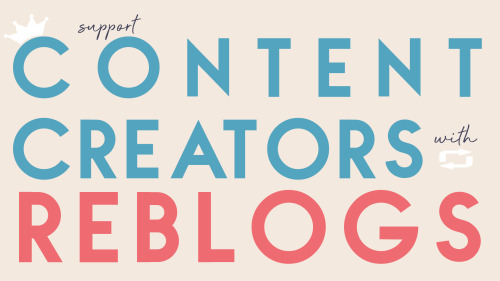
tumblr is not instagram. likes on tumblr, while appreciated, are effectively useless in helping a creator reach a wider audience.
when you like something, it goes into your own personal folder. and chances are good that, even if it’s public, no one will see it.
likes do not get shared to the dashboard, where others can actually see and have the opportunity to engage.
liking a creation only really benefits you, and not the creator or the rest of the tumblr community!
likes are great for bookmarking, saving posts with the intent of a later reblog, engaging with certain posts that don’t need to be shared (ie. personal posts), posts that you are not comfortable sharing, and prepping a queue.
REBLOGGING is the best way to support a content creator!
reblogs boost attention and engagement. it actually allows for that content to be shared with others. which, really, is what tumblr is all about!
tldr; reblogs > likes. please don’t take content creators for granted. this site would be nothing without them!
Research on the Elongated Skulls
There is evidence of elongated skulls in many different places around the world. In Egypt, these skulls are often found in graves from the Old and Middle Kingdom periods. They are also found in Peru and have been used in religious ceremonies for centuries. In North America, many Native communities have traditionally worn these types of headdresses and jewelry. The presence of elongated skulls in ancient history proves that human anatomy has been changing for thousands of years.

The Egyptians appear to have used the elongated skulls as ornaments for their tombs. ‘‘The priests of the time believed that the gods would transfer their souls to the bodies of their ancestors after they died, so it was important to provide the deceased with nice things to help them reach the afterlife. They also may have had practical uses. They believed they used them to drain water from their underground temples, prone to flooding. The Indigenous people’s of Peru also used the elongated skulls as grave goods. Because they believed that the spirits of their dead ancestors resided inside the skulls, they were buried with these artifacts near the head of the body to aid their passage into the afterlife. According to the Inca civilization, it was up to the priests to pass judgment on whether or not a person was worthy enough to enter the afterlife. They also used the skulls for divination and a good luck charm to protect them from harm.’’

There are many theories about how elongated skulls came to exist. One theory is that they are the remains of an extinct race of people that lived on Earth thousands of years ago. These "giants" may have lived alongside the Native Americans or descended from an earlier human civilization during the Ice Age. Another theory is that they were created artificially using clay, metal, or wood molds. ‘‘As the Spanish colonized the Americas, many different cultures were exposed to new ideas about science and medicine. As a result, many of these people began experimenting with new ways to create artificial body parts. Besides tattooing, intentional scarring, piercing, and teeth sharpening, intentional cranial deformation is another form of mutilation of the human body and is associated with the cultural background of society. It has been related to religion, aestheticism, beauty, or facilitating tribal identity.’’

I love Fiona because she's just that good at being the top dog #Fiona's the best
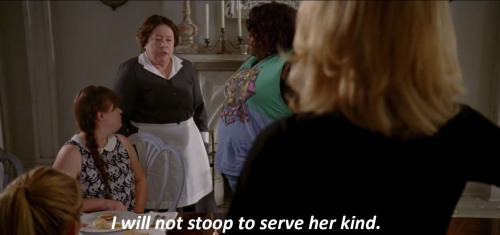

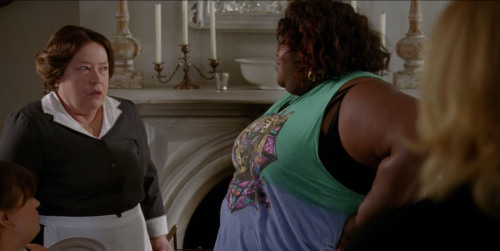
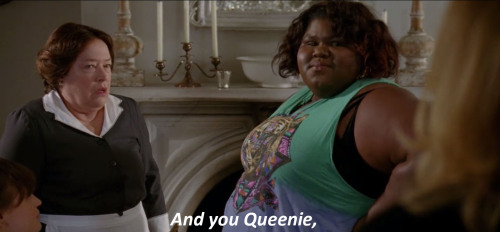

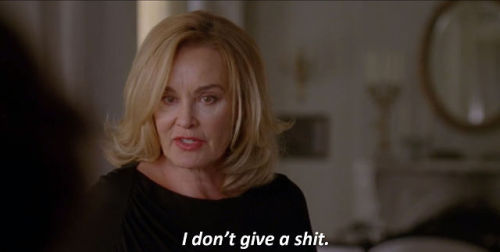
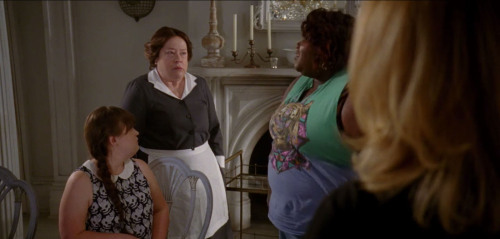


Ron DeSantis just kidnapped a 13-year old boy.
Ron DeSantis just kidnapped a 13-year old boy.
Earlier this evening, at around 7 PM CT U.S., Rebekah Jones (notably one of DeSantis’ biggest political enemies right now) underwent a raid on her home by state police.
Guns were pointed in the face of her 13-year old son, Jack. They arrested him under the charges of digital terrorism and “on state orders.”
They are refusing to let him go home and they are refusing to let Jones see him.
These are her screenshots recounting the incident from earlier tonight. They were taken at 10:23 PM CT U.S.



Reblog. I don’t care who you are, reblog this. We have to make sure that this doesn’t get buried – it’s already happening.
The Tuskegee Experiment
NO. 1
The Tuskegee Experiment was a hoax experiment used to study how black Americans differ from white Americans in catching a disease. It was a study truly held on the biases and stereotypes of other races. No scientific experiment inflicted more damage on the collective psyche of black Americans than the Tuskegee experiment. ‘‘In 1932, following a survey of the incidence of syphilis in a number of Southern regions, the venereal disease division of the U.S Public Health Service (USPHS) began what turned out to be a forty-year project in Macon County, Alabama, to follow the effects of untreated syphilis in some 400 black men. The study continued through World War II, when a number of the men who were called up for the draft and, had they not been research subjects, would have received medical attention for their infection. It continued through the 1950s, after the efficacy of penicillin treatment was established, and after the Nuremberg trials produced a code of ethics for biomedical research. It lasted through the 1960s, untouched by the civil rights agitation, and unaffected by the code of research adopted by the USPHS itself. It ended only in 1972 when an account of the experiment in the Washington Post sparked a furor.’’
NO. 2
One question that boggles the mind is how could an experiment of such degree that violated both moral and medical ethics continue on for so long? Unfortunately, no questions were asked about the rights and welfare of the men who became study/research subjects, and those same men didn’t even understand that they were unwillingly participating in a research project. Each man was given many treatments, placebo’s mostly, including a ‘spinal tap’, where the needle went directly into the spine without anesthesia, just to see what would happen. ‘‘At least three generations of doctors serving in the venereal disease division of the USPHS, numerous officials at the Tuskegee Institute and its affiliated hospital, hundreds of doctors in the Macon County and Alabama medical societies, and numerous foundation officials at the Rosenwald Fund and Milbank Memorial Fund. It also includes the many readers of such medical journals like the Public Health Reports, the Archives of Internal Medicine, and the Journal of Chronic Diseases. These readers could not have escaped the conclusion that untreated blacks had been severely damaged. In July 1954, an article in the Public Health Reports, to choose one example from many, concluded that ‘the life expectancy of a Negro Male between the ages of 25 to 50 years, infected with syphilis and receiving no appreciable treatment for his infection, is reduced by about 17%.’’
NO. 3
As the 400 men were being ‘treated’, government officials were ecstatic to see that syphilis was the same in blacks as it was in whites, by looking at the many and various autopsies of the men who did not survive, due to organ failure and damage. Racism was at the forefront of this tragedy, as scientists saw black men as expendable and looked forward to seeing the disease progress. Men who were affected tried to seek out treatment elsewhere, in other counties but were called back by the very doctors and nurses they trusted, since they were apart of the study. Once the news story broke out, many in the black community lost faith in the government and no longer believed health officials who spoke on matters of public concern. For example, when the AIDS crisis began in the ’80s and ’90s, ‘‘the Tuskegee experiment predisposed many blacks to distrust health authorities, a fact many whites had difficulty understanding. The NYTimes on May 6, 1992, many black Americans believes that AIDS and the health measures used against it are part of the conspiracy to wipe out the black race. To support their assertion, their editor cited a survey of black church members in 1990 that revealed ‘an astonishing 35% believed AIDS was a form of genocide.’
The teachings of Henry Highland Garnet vs. Fredrick Douglass
Henry Highland Garnet didn’t come up with the best ideas to counteract slavery and resistance against it, as his ideas were mixed with violence that critics like Fredric Douglass opposed for fear that it would ignite rebellions across the states that African-Americans could not win or face bloody white backlashes. But, something that black leaders like Douglass didn’t understand is that the demand for equal rights by appeasing the dominant elitist through morality, will simply not work. A great black activist during this time, Martin DeLaney explains that appeasing the dominant society through morality and common decency will not work because you cannot force your morals, no matter how right they are on a people, group, or individual who are unwilling to listen or hear. In other words, it isn’t morality that holds the reins, it is power, and that is true no matter what century we’re discussing.

First, we should get to know who Henry Highland Garnet was ‘‘born a slave on December 23, 1815, in New Market, Kent County, Maryland, and escaped with his family in 1824, was the grandson of a captured Mandingo chief. Garnet’s early education was in a segregated school on Mulberry Street in Manhattan. In 1835, he was in attendance at the Canaan Academy, a New Hampshire School, that was destroyed by a racist mob. Garnet, like other abolitionists during the 1840s, was critical in his assessment of the various emigrationist programs. That process, however, was an evolutionary one.’’

One of his best quotes, ‘‘Neither God nor angels or just men, command you to suffer for a single moment. Therefore it is your solemn and imperative duty to use every means, both moral, intellectual, and physical that promises success….(in Woodon 1925, 1969), one of his most radical statements in regards to slavery. The speech, the earliest extant speech by a black man advocating violence in America, entitled ‘An Address to the Slaves of the United States, was delivered before the National Convention of Colored Citizens at Buffalo, New York, in 1862. Despite its significance of the speech and the speaker, Henry Highland Garnet is virtually unknown to students of American history’’. Garnet truly believed that the only way for slaves to gain their freedom from slave owners was to take it by force, by any means necessary, and Fredrick Douglass fiercely opposed such views, as he wanted to have all slaves be freed through non-violence and appealing to people’s sense of morality. The two went back and forth, Douglass wrote that educated men who followed Garnet’s ‘backwatered and destructive’ stance had no stomach for continuing the struggle against prejudice and ignorance in this country, and thus it was that they sought more congenial places so they could live 'peaceful lives'.

Nevertheless, Garnet inspired his people when it seemed like all was lost, a talent of his, as his voice was awe-inspiring, and people who were tired of being crushed under the weight of oppression who didn’t think non-violence was going to work, flocked to him during his weekly sermons. ‘‘There was something about his personality which few leaders possessed—the commanding presence which inspires courage and the will to fight through difficulties. In his personality were reflected the fire to genius of African chieftains who had defied the slave catchers and later rankled Southern bondage.’’

Belly Dancing
NO. 1
The art of belly dancing is a Middle Eastern practice that has, over time, gravitated towards Western white American women. The way American women dance is this is a ‘glamorization’, and more focused on the power of reception, rather than cultivating it and respecting the practice. Originally, belly dancing is based on ancient folk and social dances in North African and Middle Eastern countries, particularly Egypt and Turkey. The dance is characterized by various hip, torso, shoulder, and chest movements. ‘‘The images projected by Westerners in the performance of belly dance and other forms of oriental dance raise the thorny issue of orientalism. The vocabulary of the dance and its position within the framework of the West, especially the United States, as ‘other’ provides an ‘empty’ location, as in ‘not part of my culture’, for the construction of exotic new fantasy identities. At the same time, as a repository of media stereotypes and thus Western fantasies of women, it also provides physical images via the femme fatale which the (generally female) dance emulates in order to play an assertive sexual role in a male-dominated Western society.’’
NO. 2
Of course, here in the West, its meaning has changed, especially in America when gained popularity over 100 years ago when ‘dancing girls’ from different countries showcased in Chicago’s World Fair. ‘‘Because of the movements of body parts, such as the stomach, that were expected to be tightly constrained during the Victorian era, controversy surrounded these performers, and belly dance became associated with burlesque, stripping and prostitution. Despite perceptions of belly dancing being associated with sex work, the dance has a variety of meanings for participants, like spiritual, communal, and feminine qualities. For most dancers in the United States, the dance is a form of leisure. Leisure is a voluntary activity that people pursue with a positive state of mind during their free time. For many dancers, belly dance is an enjoyable form of recreation, rather than a primary source of income. Women in most large and mid-size cities around the country take belly dance classes at studios, gyms, and recreation centers.’’
NO. 3
Belly dancing is a key icon of the Middle East and is a site for performing and interpreting. It is appealing because it expresses ‘imperial feelings’, or the complexity of psychological and political belonging to an empire that is often unspoken, sometimes subconscious, but always present, the ‘habits of heart and mind’ that infuse and accompany structures of difference and domination. We can call on U.S imperialism as an example, as it rests as a multicultural nationalism. Belly dancing has become a ‘‘site for staging a New Age feminism and liberal Orientalist perspective on Arab and Muslim women, illustrating what Edward Said called, ‘new-Orientalism’ of the present moment. Orientalism continues to be a deeply appealing, binary frame for imagining the ‘West’ in opposition to the ‘Orient’, or to the East—a Western style for dominating, restructuring, and having authority over the Orient’, through the production of an ‘idea that has a history and tradition of thought, imagery, and vocabulary that has given it a reality and presence in and for the West.’’

-
 bobthebenevolentpirate liked this · 1 month ago
bobthebenevolentpirate liked this · 1 month ago -
 krismunich liked this · 2 months ago
krismunich liked this · 2 months ago -
 rando1048 liked this · 2 months ago
rando1048 liked this · 2 months ago -
 be-0kay reblogged this · 3 months ago
be-0kay reblogged this · 3 months ago -
 michaelormewood reblogged this · 3 months ago
michaelormewood reblogged this · 3 months ago -
 astralwashboard reblogged this · 3 months ago
astralwashboard reblogged this · 3 months ago -
 hey-ak liked this · 4 months ago
hey-ak liked this · 4 months ago -
 tijuassissy liked this · 5 months ago
tijuassissy liked this · 5 months ago -
 hummingbird-notes reblogged this · 5 months ago
hummingbird-notes reblogged this · 5 months ago -
 a-twinkleinthesky liked this · 5 months ago
a-twinkleinthesky liked this · 5 months ago -
 warynerd reblogged this · 6 months ago
warynerd reblogged this · 6 months ago -
 strokingnojoking liked this · 7 months ago
strokingnojoking liked this · 7 months ago -
 snarkissist liked this · 7 months ago
snarkissist liked this · 7 months ago -
 henibi reblogged this · 8 months ago
henibi reblogged this · 8 months ago -
 bad-jojoe reblogged this · 8 months ago
bad-jojoe reblogged this · 8 months ago -
 crowharpy liked this · 8 months ago
crowharpy liked this · 8 months ago -
 4ll-th1ngs-r4nd0m liked this · 9 months ago
4ll-th1ngs-r4nd0m liked this · 9 months ago -
 care-or-lynn liked this · 1 year ago
care-or-lynn liked this · 1 year ago -
 callipigyan reblogged this · 1 year ago
callipigyan reblogged this · 1 year ago -
 agirlinthegalaxy reblogged this · 1 year ago
agirlinthegalaxy reblogged this · 1 year ago -
 pupstar3752 liked this · 1 year ago
pupstar3752 liked this · 1 year ago -
 dyadron liked this · 1 year ago
dyadron liked this · 1 year ago -
 villiansswing liked this · 1 year ago
villiansswing liked this · 1 year ago -
 empress-violetlight liked this · 1 year ago
empress-violetlight liked this · 1 year ago -
 dannybagpipesarecalling reblogged this · 1 year ago
dannybagpipesarecalling reblogged this · 1 year ago -
 heckcareoxytwit reblogged this · 1 year ago
heckcareoxytwit reblogged this · 1 year ago -
 unforgettable-sensations liked this · 1 year ago
unforgettable-sensations liked this · 1 year ago -
 mmmbopthroughlife reblogged this · 1 year ago
mmmbopthroughlife reblogged this · 1 year ago -
 callipigyan liked this · 1 year ago
callipigyan liked this · 1 year ago -
 itszero2hero reblogged this · 1 year ago
itszero2hero reblogged this · 1 year ago -
 dogsthatlookliketomhaverford liked this · 1 year ago
dogsthatlookliketomhaverford liked this · 1 year ago -
 fondlymorning reblogged this · 1 year ago
fondlymorning reblogged this · 1 year ago -
 fondlymorning liked this · 1 year ago
fondlymorning liked this · 1 year ago -
 valiantlycleverinfluencer reblogged this · 1 year ago
valiantlycleverinfluencer reblogged this · 1 year ago -
 popularvote1 reblogged this · 1 year ago
popularvote1 reblogged this · 1 year ago -
 popularvote1 liked this · 1 year ago
popularvote1 liked this · 1 year ago -
 abbinurmel reblogged this · 1 year ago
abbinurmel reblogged this · 1 year ago -
 simsmaniaworld liked this · 1 year ago
simsmaniaworld liked this · 1 year ago -
 wilted-rafflesia liked this · 1 year ago
wilted-rafflesia liked this · 1 year ago -
 shiibboshii liked this · 1 year ago
shiibboshii liked this · 1 year ago -
 thein273 reblogged this · 1 year ago
thein273 reblogged this · 1 year ago -
 cagandante-communistoide reblogged this · 1 year ago
cagandante-communistoide reblogged this · 1 year ago -
 cagandante-communistoide liked this · 1 year ago
cagandante-communistoide liked this · 1 year ago -
 borderlinehannibal reblogged this · 1 year ago
borderlinehannibal reblogged this · 1 year ago -
 agentukelele reblogged this · 1 year ago
agentukelele reblogged this · 1 year ago -
 peculiar-reblogs reblogged this · 1 year ago
peculiar-reblogs reblogged this · 1 year ago
26-year-old Anthro-Influencer Anthropology, blogger, traveler, mythological buff! Check out my ebook on Mythology today👉🏾 https://www.ariellecanate.com/
208 posts
